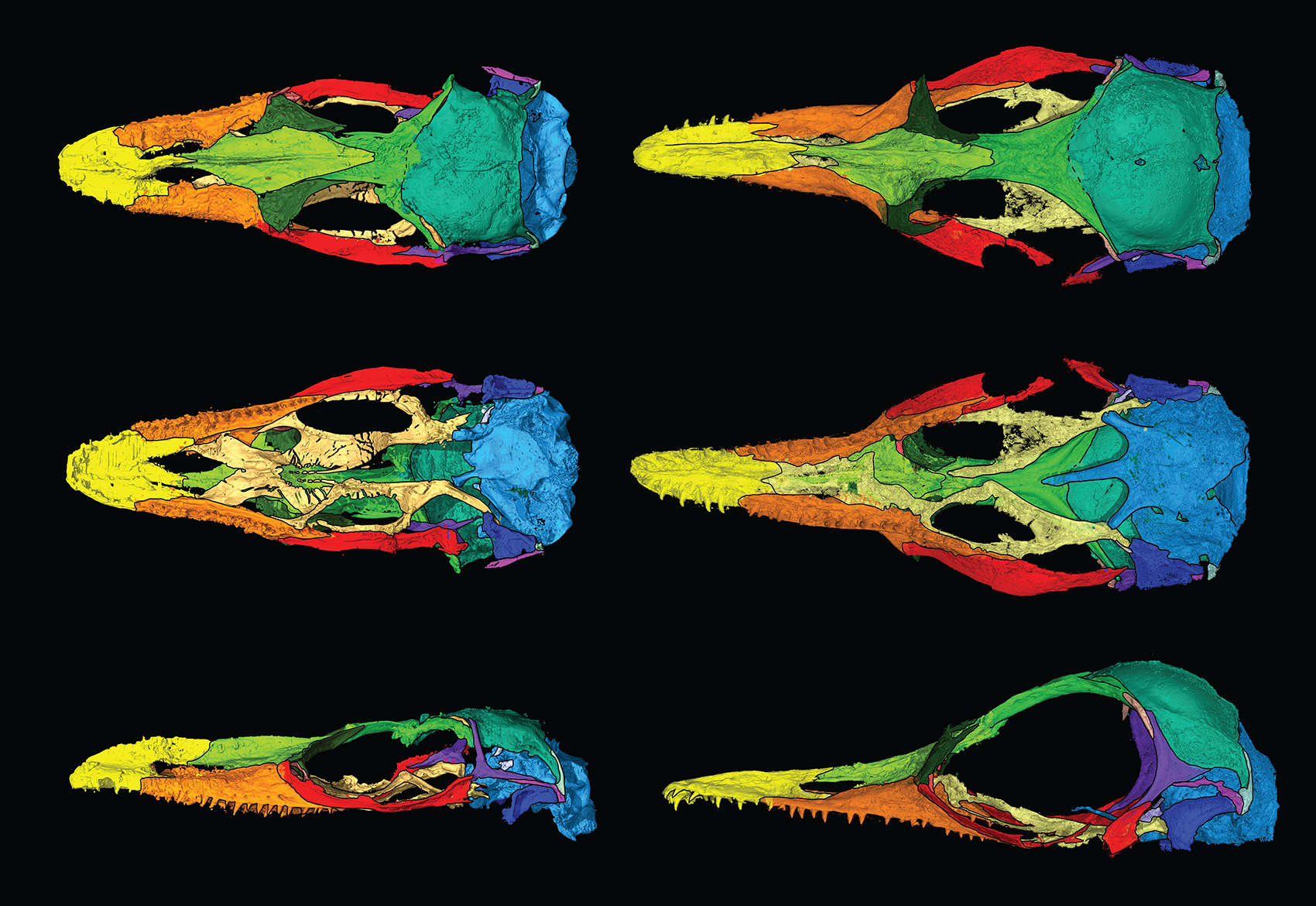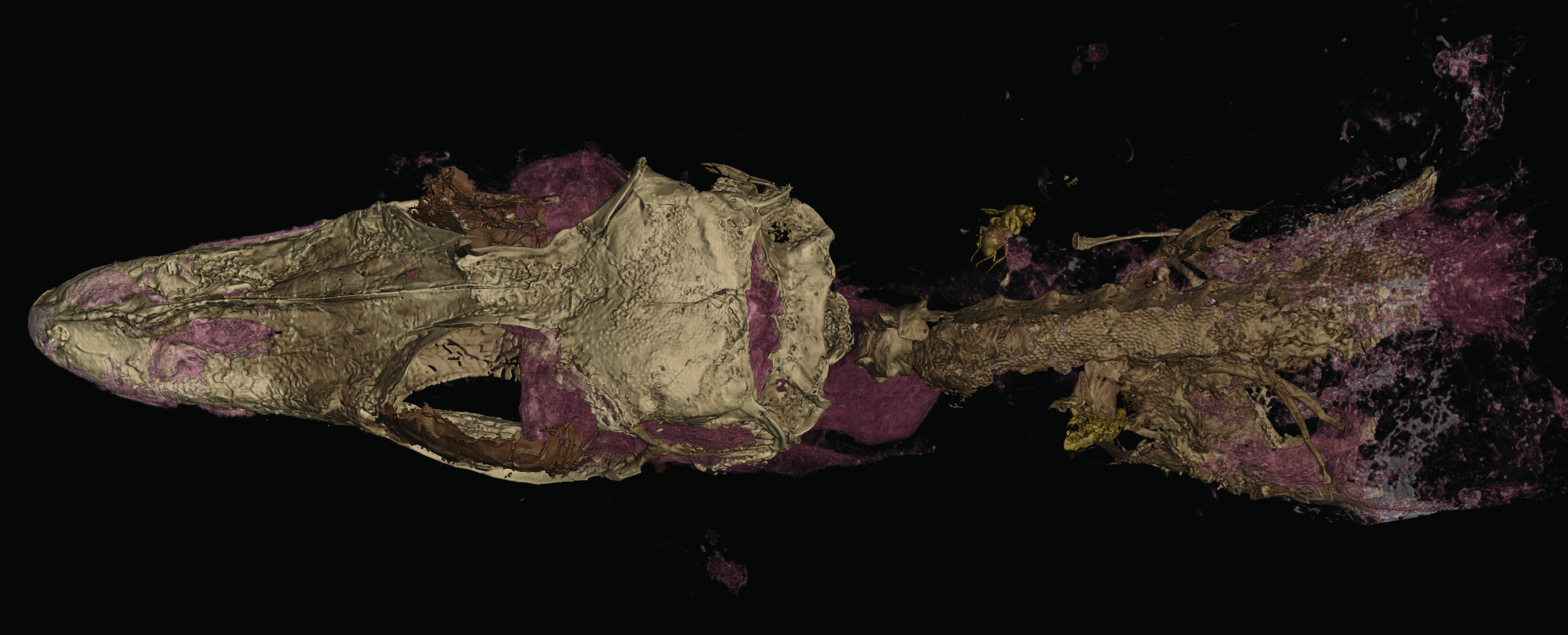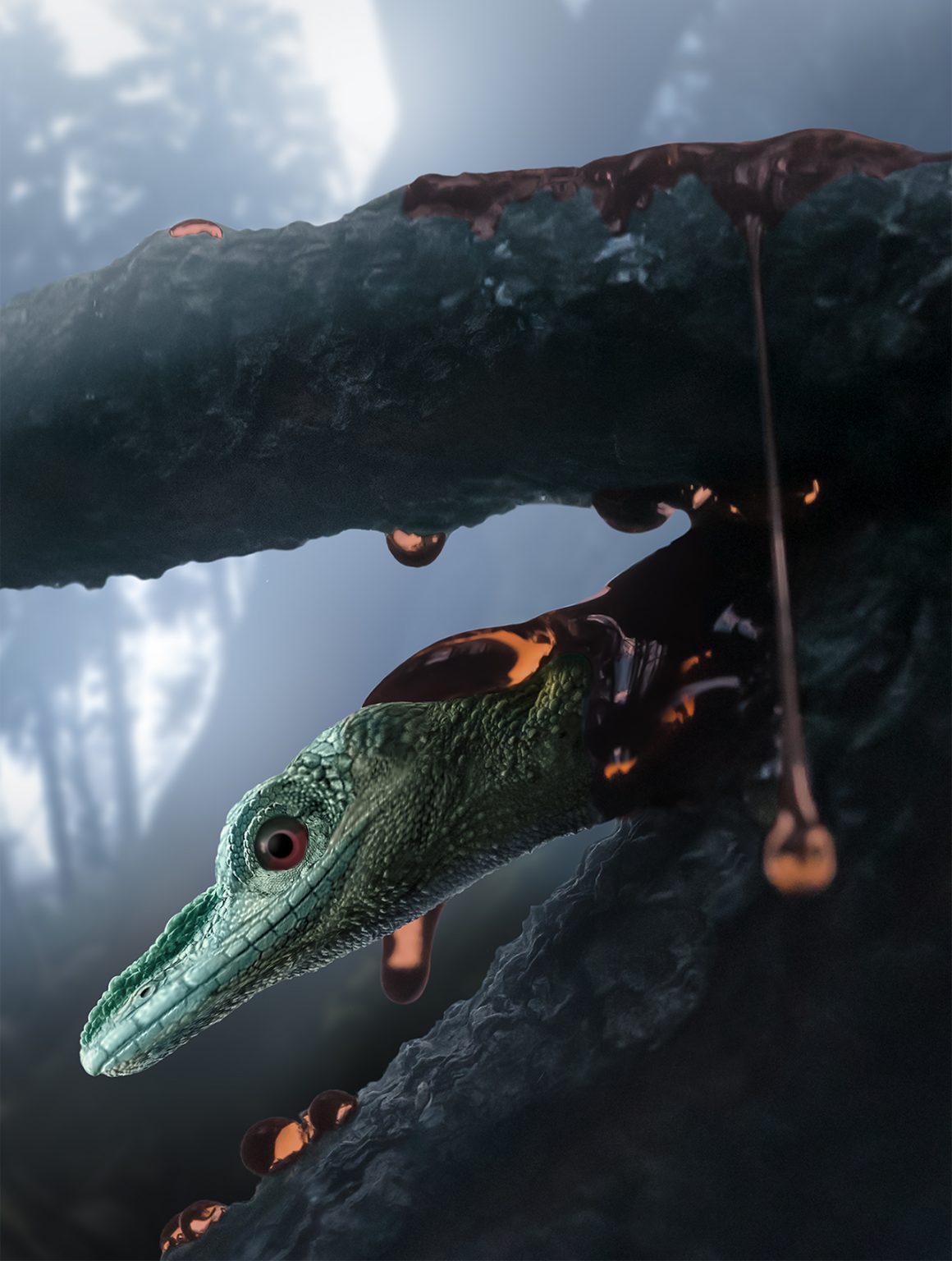Last year, a tiny fossil became big news. Trapped inside ancient amber, scientists thought they'd found the skull of a minuscule, hummingbird-like dinosaur with pointy teeth, bulging eyes, and surprisingly robust bones.
It was like no ancient bird or dinosaur ever discovered before. That's because it was actually neither.
A similar skeleton found in the same area now suggests the so-called "eye tooth bird" (Oculudentavis khaungraae) is, in reality, a lizard. Its long snout had simply been squashed over time so that it resembled more of a beak.
"Imagine taking a lizard and pinching its nose into a triangular shape," explains Edward Stanley, director of the Florida Museum of Natural History.
"It would look a lot more like a bird."
 Digitally isolated bones from the skull of O. naga (left) and O. khaungraae (right). ( Edward Stanley)
Digitally isolated bones from the skull of O. naga (left) and O. khaungraae (right). ( Edward Stanley)
Even with such a beak-like snout, some experts remained unconvinced by the discovery. In 2020, shortly after the tiniest known dinosaur was announced, scientists in the field began disputing the classification.
While some early bird fossils have been found with mouths full of teeth - a remnant of their dinosaur heritage - these gnashers are usually nestled in sockets, not directly attached to the jaw bone; and no early bird has ever possessed such lizard-like eyes.
Ultimately, these arguments were enough for editors of the journal to retract the Oculudentavis paper altogether, declaring it a misclassification. While some of the original study authors continue to stick to their guns, another lizard fossil found nearby now indicates they were indeed mistaken.
This new fossil also has a puzzling appearance that doesn't seem to fit in anywhere. At first glance, it doesn't look much like the other skull reported last year. But after isolating and comparing bones found in each amber deposit, researchers have found several key comparisons between the two.
 O. naga specimen with preserved bone and soft tissue. (Edward Stanley)
O. naga specimen with preserved bone and soft tissue. (Edward Stanley)
Both fossils are roughly the same size, have teeth attached to the jawbone, and possess lizard-like eye sockets of similar size and shape. What's more, the newly discovered fossil also has visible scales and a complete skull, with a hockey stick-shaped squamosal bone that's present in all scaled reptiles.
The two tiny fossils are not of the same species, but CT scans suggest they do belong to the same genus of lizard, which lived roughly 100 million years ago in the same region of the world. The new species has therefore been named Oculudentavis naga.
"It's a really weird animal. It's unlike any other lizard we have today," says herpetologist Juan Diego Daza from Sam Houston State University.
"We think it represents a group of squamates we were not aware of."
 Artistic interpretation of O. naga. (Stephanie Abramowicz/Peretti Museum Foundation)
Artistic interpretation of O. naga. (Stephanie Abramowicz/Peretti Museum Foundation)
The unusual features in both these lizards is probably why they have proved so tricky to place in the animal kingdom. That, and the fact that the original Oculudentavis skull had a slightly squashed snout.
Reconstructing the original shape of these fossils was painstaking work, but ultimately it showed that O. khaungraae's snout had been squeezed during fossilization.
Without this compression, it would have resembled the long snout on the other lizard fossil, O. naga, rather than a beak, researchers say.
"Despite presenting a vaulted cranium and a long and tapering snout, it does not present meaningful physical characters that can be used to sustain a close relationship to birds, and all of its features indicate that it is a lizard," says Susan Evans, who studies vertebrate morphology and paleontology at University College London.
The O. naga specimen was so well preserved, scientists could even make out some soft tissue structures on the top of its snout and underneath its chin. These appear to be loose flaps of skin that the reptile may have inflated during displays, which is common for other lizards.
Researchers still aren't sure where Oculudentavis exactly sits in the lizard family, but at least now they are barking up the right tree.
The study was published in Current Biology.
Article From & Read More ( Once Mistaken For a Tiny Bird With Teeth, This Fossil Is Now Officially a Lizard - ScienceAlert )https://ift.tt/3gzAK0W
Science
No comments:
Post a Comment